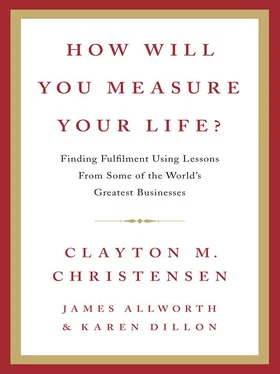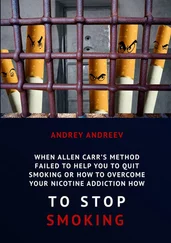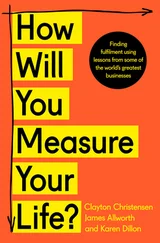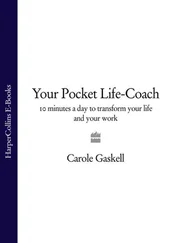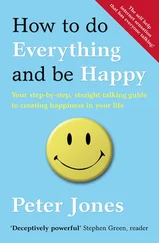I said, “Andy, I still can’t. I need to describe how this process worked its way through a very different industry, so you can visualize how it works.” I told the story of the steel-mill industry, in which Nucor and other steel mini-mills disrupted the integrated steel-mill giants. The mini-mills began by attacking at the lowest end of the market—steel reinforcing bar, or rebar—and then step by step moved up toward the high end, to make sheet steel—eventually driving all but one of the traditional steel mills into bankruptcy.
When I finished the mini-mill story, Andy said, “I get it. What it means for Intel is …” and then went on to articulate what would become the company’s strategy for going to the bottom of the market to launch the lower-priced Celeron processor.
I’ve thought about that exchange a million times since. If I had tried to tell Andy Grove what he should think about the microprocessor business, he would have eviscerated my argument. He’s forgotten more than I will ever know about his business.
But instead of telling him what to think, I taught him how to think. He then reached a bold decision about what to do, on his own.
I Don’t Have an Opinion, the Theory Has an Opinion
That meeting with Andy changed the way I answer questions. When people ask me something, I now rarely answer directly. Instead, I run the question through a theory in my own mind, so I know what the theory says is likely to be the result of one course of action, compared to another. I’ll then explain how it applies to their question. To be sure they understand it, I’ll describe to them how the process in the model worked its way through an industry or situation different from their own, to help them visualize how it works. People, typically, then say, “Okay, I get it.” They’ll then answer their question with more insight than I could possibly have.
A good theory doesn’t change its mind: it doesn’t apply only to some companies or people, and not to others. It is a general statement of what causes what, and why. To illustrate, about a year after meeting with Andy Grove, I received a call from William Cohen, then–secretary of defense in the Clinton administration. He told me he’d read The Innovator’s Dilemma. “Could you come to Washington and talk to me and my staff about your research?” he asked. To me, this was a once-in-a-lifetime opportunity.
When Secretary Cohen had said “my staff,” somehow I had imagined second lieutenants and college interns. But when I walked into the secretary’s conference room, the Joint Chiefs of Staff were in the front row, followed by the secretaries of the Army, Navy, and Air Force, and then each of the secretaries’ under-, deputy, and assistant secretaries. I was stunned. He said that this was the first time he had convened all of his direct reports in one room.
Secretary Cohen simply asked me to present my research. So using the exact same PowerPoint slides I had used with Andy Grove, I started explaining the theory of disruption. As soon as I had explained how the mini-mills had undermined the traditional steel industry by starting with rebar at the bottom, General Hugh Shelton, then the chairman of the Joint Chiefs of Staff, stopped me. “You have no idea why we are interested in this, do you?” he queried. Then he gestured to the mini-mill chart. “You see the sheet steel products at the top of the market?” he asked. “That was the Soviets, and they’re not the enemy anymore.” Then he pointed to the bottom of the market—rebar—and said, “The rebar of our world is local policing actions and terrorism.” Just as the mini-mills had attacked the massive integrated mills at the bottom of the market and then moved up, he worried aloud, “Everything about the way we do our jobs is focused on the high end of the problem—what the USSR used to be.”
Once I understood why I was there, we were able to discuss what the result of fighting terrorism from within the existing departments would be, versus setting up a completely new organization. The Joint Chiefs later decided to go down the route of forming a new entity, the Joint Forces Command, in Norfolk, Virginia. For more than a decade, this command served as a “transformation laboratory” for the United States military to develop and deploy strategies to combat terrorism around the world.
On the surface, competition in the computer chip market and the proliferation of global terrorism could not seem like more different problems to tackle. But they are fundamentally the same problem, just in different contexts. Good theory can help us categorize, explain, and, most important, predict.
People often think that the best way to predict the future is by collecting as much data as possible before making a decision. But this is like driving a car looking only at the rear-view mirror—because data is only available about the past.
Indeed, while experiences and information can be good teachers, there are many times in life where we simply cannot afford to learn on the job. You don’t want to have to go through multiple marriages to learn how to be a good spouse. Or wait until your last child has grown to master parenthood. This is why theory can be so valuable: it can explain what will happen, even before you experience it.
Consider, for example, the history of mankind’s attempts to fly. Early researchers observed strong correlations between being able to fly and having feathers and wings. Stories of men attempting to fly by strapping on wings date back hundreds of years. They were replicating what they believed allowed birds to soar: wings and feathers.
Possessing these attributes had a high correlation—a connection between two things—with the ability to fly, but when humans attempted to follow what they believed were “best practices” of the most successful fliers by strapping on wings, then jumping off cathedrals and flapping hard … they failed. The mistake was that although feathers and wings were correlated with flying, the would-be aviators did not understand the fundamental causal mechanism—what actually causes something to happen—that enabled certain creatures to fly.
The real breakthrough in human flight didn’t come from crafting better wings or using more feathers. It was brought about by Dutch-Swiss mathematician Daniel Bernoulli and his book Hydrodynamica, a study of fluid mechanics. In 1738, he outlined what was to become known as Bernoulli’s principle, a theory that, when applied to flight, explained the concept of lift. We had gone from correlation (wings and feathers) to causality (lift). Modern flight can be traced directly back to the development and adoption of this theory.
But even the breakthrough understanding of the cause of flight still wasn’t enough to make flight perfectly reliable. When an airplane crashed, researchers then had to ask, “What was it about the circumstances of that particular attempt to fly that led to failure? Wind? Fog? The angle of the aircraft?” Researchers could then define what rules pilots needed to follow in order to succeed in each different circumstance. That’s a hallmark of good theory: it dispenses its advice in “if-then” statements.
The Power of Theory in Our Lives
How do fundamental theories relate to finding happiness in life?
The appeal of easy answers—of strapping on wings and feathers—is incredibly alluring. Whether these answers come from writers who are hawking guaranteed steps for making millions, or the four things you have to do to be happy in marriage, we want to believe they will work. But so much of what’s become popular thinking isn’t grounded in anything more than a series of anecdotes. Solving the challenges in your life requires a deep understanding of what causes what to happen. The theories that I will discuss with you will help you do exactly that.
Читать дальше
